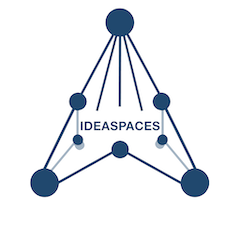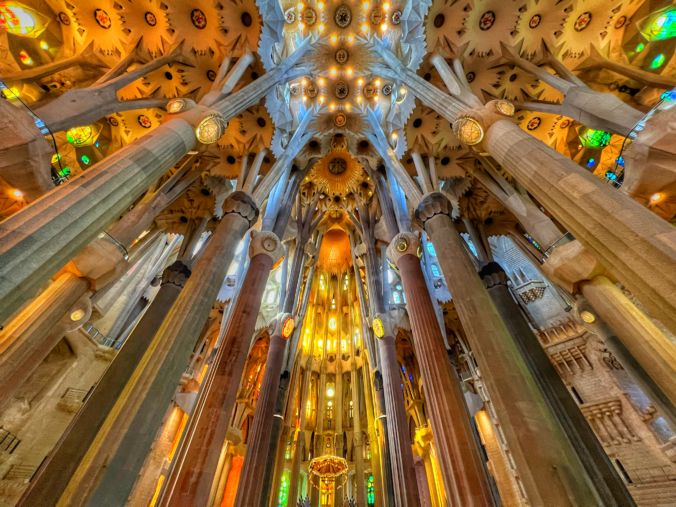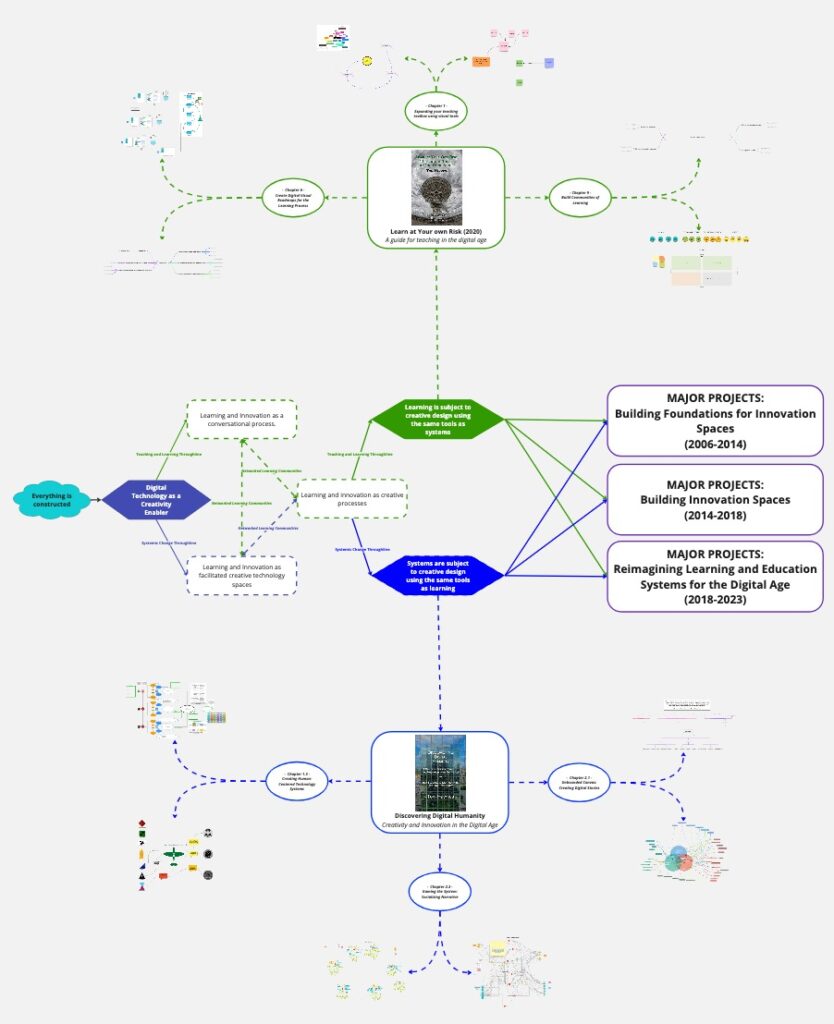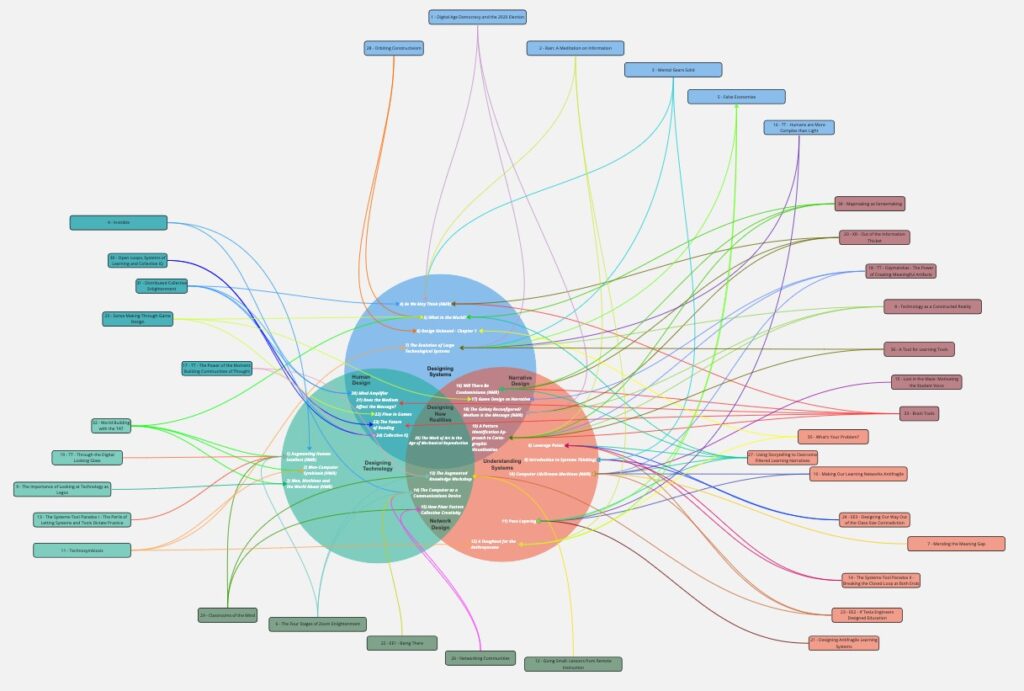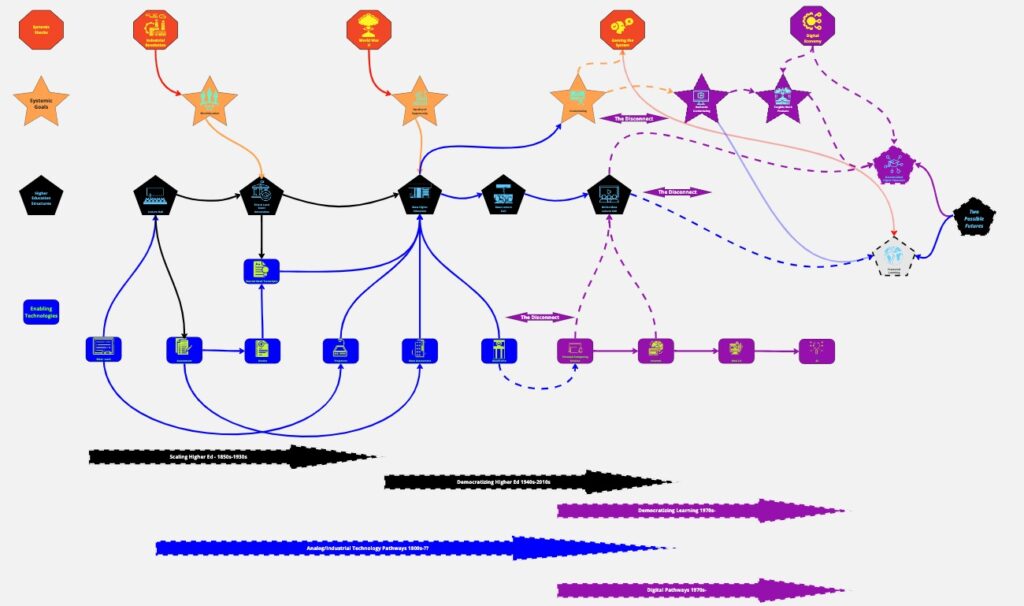The real issue in software design is the design of ideas. But most people are looking at the wrong levels, fixating on particulars, and not seeing the immensity of option – or the imperative of cleanly condensed structure. – Ted Nelson Dream Machines, 2nd ed., p. 70
Ted Nelson is interested in modeling ideas. Building on the work of Vannevar Bush, he saw the potential of computing technology to transform how we see and manipulate information. As I argued in a previous blog, seeing information in context is at least as important as having access to it. Information is not transparency. Perspective is.
Nelson understood this key facet of transparency. His lifetime of work has reimagined connections between different parts of our atomized information network. In his vision of the web, which he calls Xanadu, he sees a floating network of ideas connected bidirectionally through a series of hyperlinks, a term which he coined.
However, when Tim Berners-Lee invented the World Wide Web in the late 80s, these connections became buried. The web that emerged after Berners-Lee lost the critical trail of breadcrumbs which were central to Bush’s and Nelson’s vision of a network of ideas.
On the World Wide Web, the information itself took precedence over its connections to other information. The paper metaphor also persisted, and with it, the limitations of text. Berners-Lee recognized this shortcoming (see his book, Weaving the Web). The technology of the time limited the web he created.
Xanadu represents a practical implementation to realize Nelson’s vision of free-floating information bits and the mapping of the hidden connections between them. This is both conceptually and technically difficult. Nelson was ahead of his time, but I can imagine that it could be possible with AI and XR augmentation to approach his ideal of information transparency (more on this next week).
Concept mapping, however, excels in highlighting connections between disparate pieces of information and ideas. By putting things into perspective, and then allowing us to shift that perspective on a canvas, concept mapping can provide powerful insights into the workings of our own brains and the collective workings of brains in a distributed group.
Perhaps concept mapping can form a bridge between how we now manage our information stew and Nelson’s network of connected ideas. Note this illustration from Nelson’s Geeks Bearing Gifts (Mindful Press, 2008, 2009). Nelson seems to envision a concept map at the top of the graphic, but the connections extend vertically instead of just horizontally.
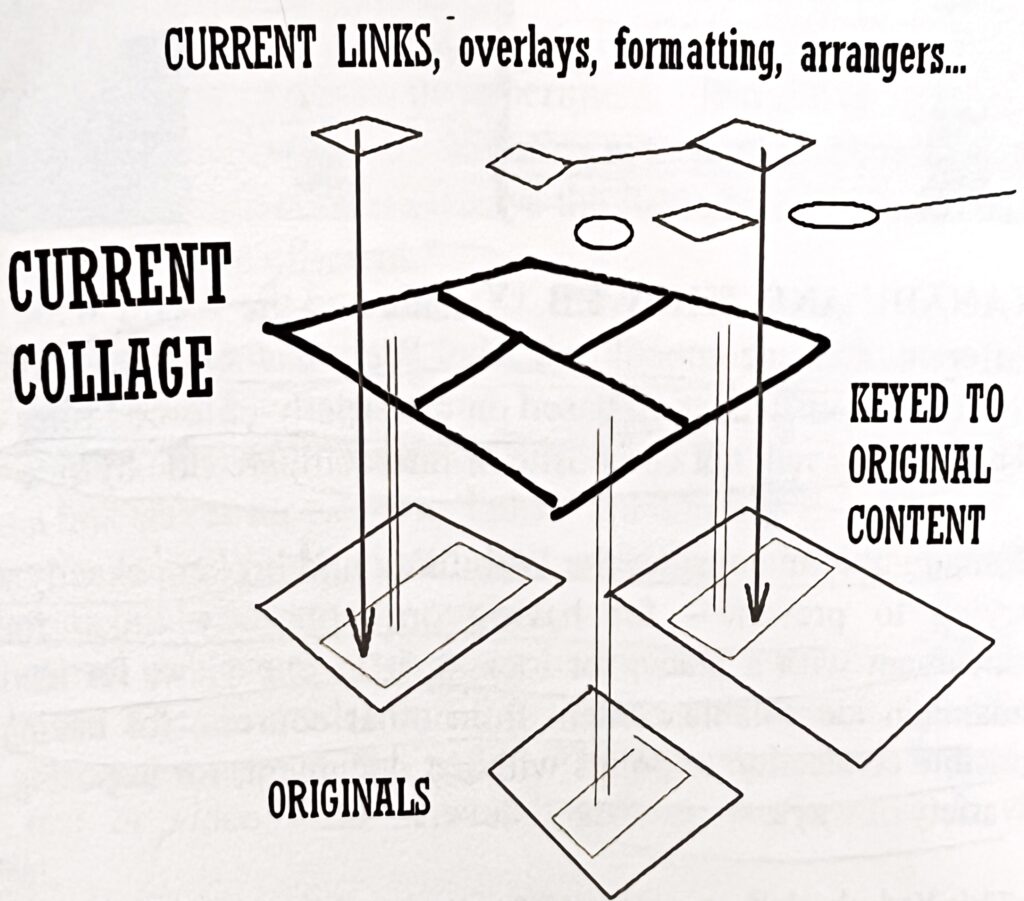
The Generalization of Documents from Nelson, Geeks Bearing Gifts
The limitations of concept mapping is that it represents a two-dimensional canvas, instead of the three-dimensional space that Nelson envisioned. And unless you engaged in the exercise with a group in a room, the technology limited concept mapping to mapping your own ideas.
I discovered a new trick with Miro that allows you to make links out of objects. We can use this technique to link to outside references like documents on the web but, more interestingly, we can also link to additional canvases within Miro. Using this trick, you can create interconnected canvases of connections. I have done this with my resume.
We can use this third dimension of interlinked canvases to explore and flesh out different subsets or rabbit holes of ideas. We can also link these to the outside web (knowing that’s a one-way street).
As in Nelson’s diagram, we can extend a two-dimensional idea space downward or upward into infinite interlinked two-dimensional idea spaces. This resembles the web as we understand it today.
However, there are two critical differences. First, it makes creating “pages” of connections almost effortless and accessible to non-technological users.
Platforms such as Miro are accessible with minimal instruction. I’ve worked with groups that created complex maps in an hour with no prior knowledge of how to use the software or even the idea of concept mapping.
Second, if you create a root level that requires the illustration of connections between these subsets of ideas, you have begun to create what Vannevar Bush referred to as breadcrumbs.
Concept mapping brings the pathways and connections to the forefront. A root guide or group of guides can create the top layer of the nested idea diagram. Other group members can then expand that core map horizontally or into linked canvases. You can even label these connections so you know who created them.
This highlights another unique aspect of a tool, like Miro. It is a collaborative and asynchronous activity. Groups of people can work together on root-level documents, subgroups of people can work on connected subsidiary documents, and all groups have the choice of working synchronously or asynchronously on a persistent canvas or sets of canvases.
I realize this only goes halfway to the environment Ted Nelson envisioned for Xanadu (again, for that we need AI and XR). However, it uses a tool that already exists, is accessible, and enhances the connections and perspective essential for achieving the transparency I wrote about in my last blog.
There is also a fourth dimension possible here. By creating persistent, adaptive idea spaces, we can see how ideas and systems evolve. I’m pretty sure that Miro does not have a history feature, but that might be something the company should design.
One of the key elements identified by Vannevar Bush in “As We May Think” is understanding how we got to where we are. Perspective over time is at least as important as perspective in space when making connections. Both aspects are critical to transparency.
As an example of how this is done, let me return to the blog map of my writing that I created earlier this year. If you go to the map now, you see that I have turned each blog title into a link linking back to the original blog.
I have also turned the reference list in the center into live links as well. What I have done here is to trace pathways anyone can follow between my work and the ideas of others.
It is up to the reader which pathway to follow. The visualization makes the connections obvious. This example doesn’t illustrate the potential for groups to create similar documents, but that is a question of scaling.
Transparency requires seeing. Seeing requires perspective. We now have tools that help us weed through that complexity, but we need to be creative about how we apply them to achieve our goals.
There are a lot of ways to assemble these interconnected idea maps. We could start with a central goal, and then have groups or individuals work outward from that goal. We could create a node of shared understanding and then work backwards from that understanding to its roots. Or we could start with a complex system map like this one and then use it to explore how that system came to be and where it lost connection its connections to human learning.
These explorations can become very meta quickly. Groups could explore how they explore, for instance.
Before we can find our way out of the information thicket, we need to make maps that help us navigate the forest. Layered concept mapping could turn into a very useful tool for mapmaking.
New tools are on the horizon, which could augment this effort even further. Generative AI is all about making connections. I could envision mapmaking AIs that could form basic maps which groups of humans could enhance further in a symbiotic partnership. But that’s the subject for the final (at least for now) transparency blog.
